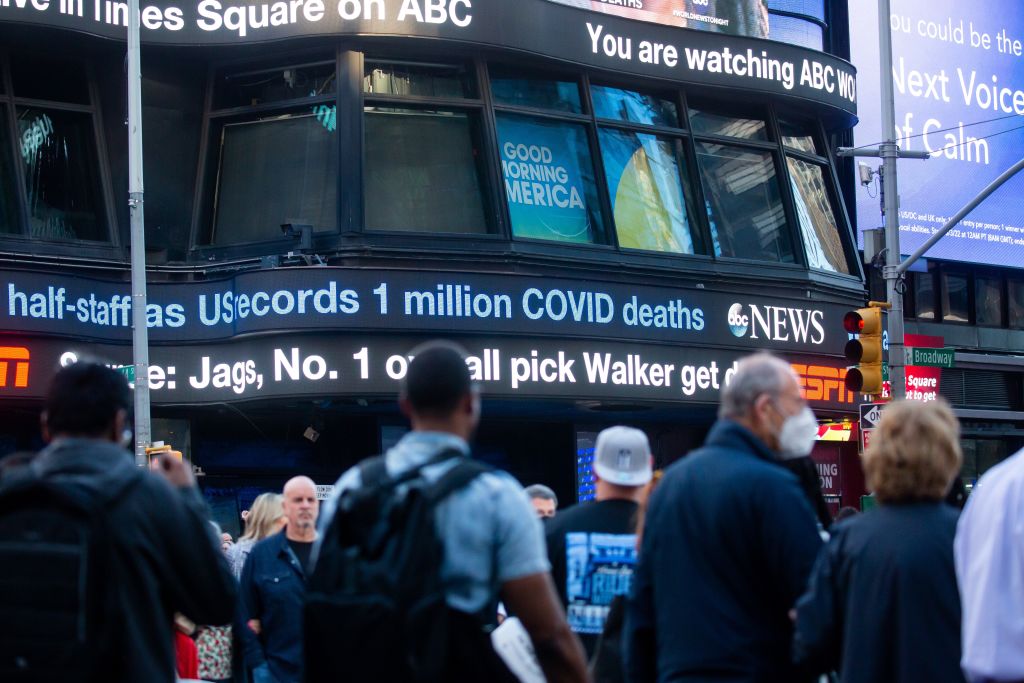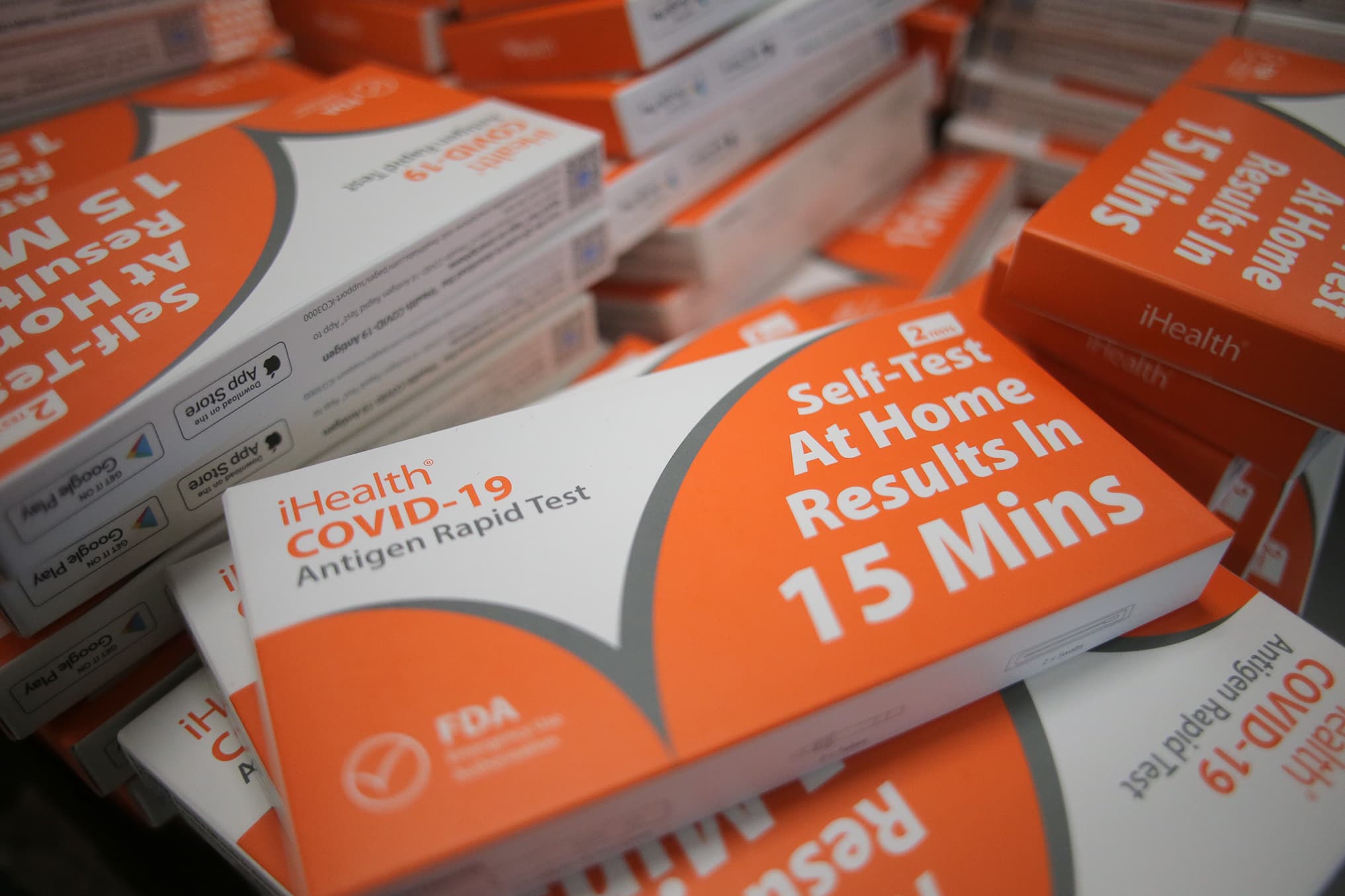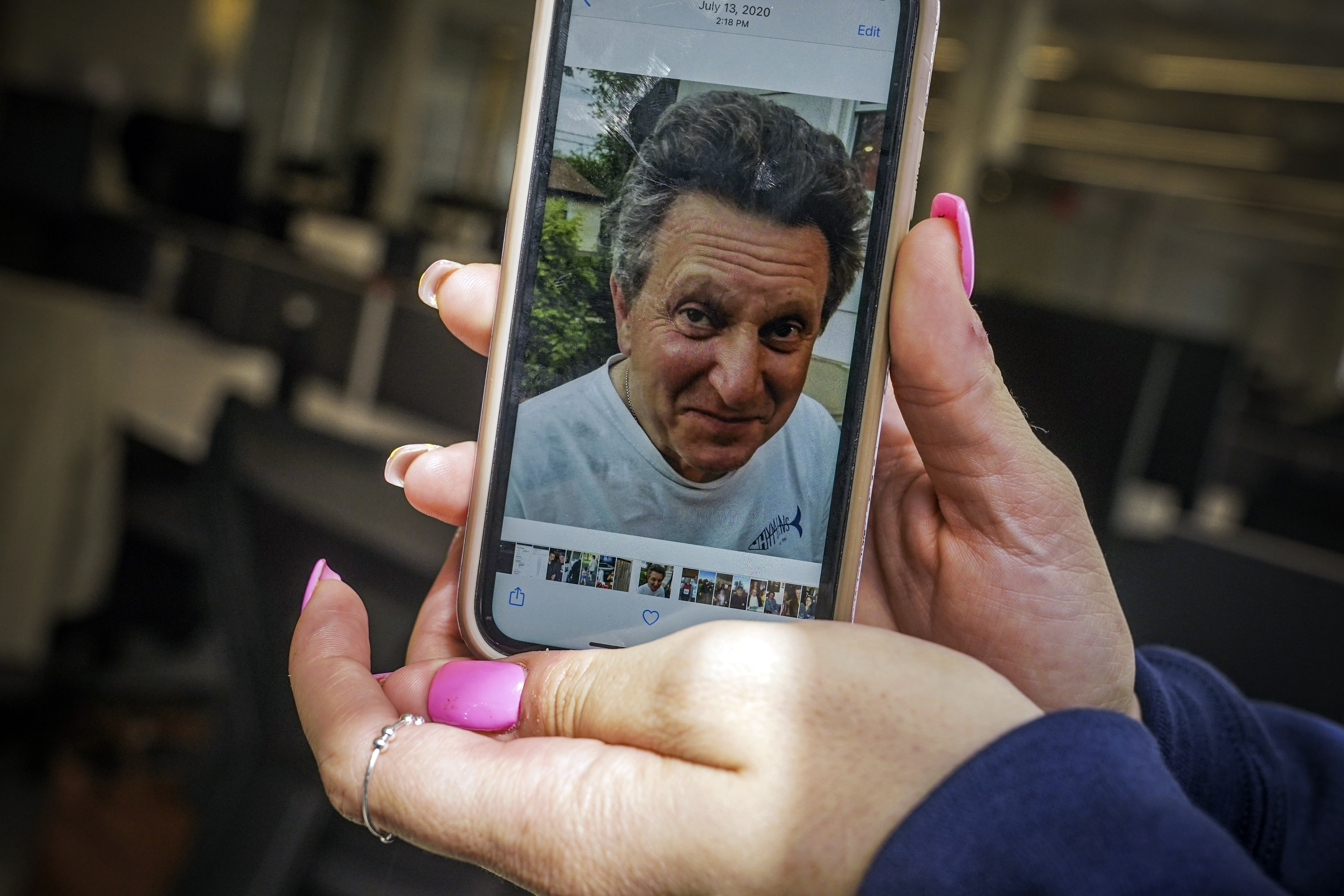The COVID-19 subvariant estimated by New York state health officials to be substantially more contagious than the first descendant of the potent omicron strain now accounts for up to 79.5% of all virus circulating in the region that encompasses the Empire State, according to new CDC data released Tuesday.
Prevalence of BA.2.12.1, which health officials say appears to be at least 25% more transmissible than BA.2 (which is said to be more 30% more contagious than its predecessor, omicron), in the agency's New York region has been increasing at a far faster rate than nationally for the last month at least, the latest weekly update shows.
The CDC puts it at 73.1% (with a range from 65.7% to 79.5%) of COVID cases in the New York region, which for its purposes also includes New Jersey, Puerto Rico and the British Virgin Islands, though says BA.2.12.1's share of cases could be higher.
That subvariant has been the dominant strain locally since the start of May, while the first omicron variant, BA.2., has retained its national dominance in recent weeks (50.9% of cases vs. 47.5% for BA.2.12.1).
Get Tri-state area news and weather forecasts to your inbox. Sign up for NBC New York newsletters.
Given the latest trends, though, BA.2.12.1 should assert its dominance in the United States before the end of this month.
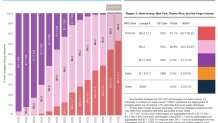
While no scientific evidence to date links BA.2.12.1 to more severe COVID-linked illness or reduced vaccine efficacy at this point, the heightened transmissibility appears clear.
New York state, for example, accounts for more than a third of the U.S. counties currently deemed high risk for community-level COVID spread by the CDC. Three-quarters of the state's 62 counties meet the threshold for that same risk level, the highest of the federal agency's three tiers. Most others in the state are at medium risk.
With Tuesday's CDC update pending, there is just one New York county the agency still considers low risk for community COVID spread: The Bronx.
It's the borough with the second-lowest full vaccination rate of the five and has reported the 10th most COVID deaths and 20th most cases since the pandemic started, Johns Hopkins research shows, so the reason it has thus far defied some of the transmission trends affecting the rest of the state isn't exactly clear. It doesn't appear to be testing -- the Mott Haven/Port Morris ZIP code has the highest median test rate in the city now.
It's highly unlikely the Bronx is somehow impervious to the intensely infectious omicron subvariant fueling soaring COVID rates in the other four boroughs. And with the city's latest COVID update putting the Bronx at a rolling new case rate above 200 cases per 100,000 residents, that last blip of green on the CDC map should be gone by nightfall.
More COVID Coverage
The NYC health department's variant tracker doesn't explicitly break out subvariant BA.2.12.1, but it does indicate BA.2-linked subvariants account for the overwhelming number of cases over the last month and a half or so. And COVID positivity rates have been rising in accordance with the heightened transmissibility associated with them.
New York City entered a "high" COVID alert phase on Tuesday. Here's what that means.
Many more BA.2.12.1 infections may go unreported. The share of positive COVID samples genomically sequenced to isolate variants is a fraction of the total confirmed cases. The city completed that exhaustive work for 10% of samples tested in the latest weekly data period. The state has cumulatively sequenced less (3.67%, per the CDC).
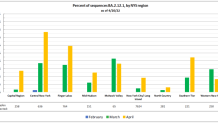
In the Central New York region, which was the first of the state's 10 to experience an omicron subvariant-linked case spike, BA.2.12.1 was first detected in February and rose to 77% of sequences by April. The subvariant also accounted for more than half of sequences in the Finger Lakes region and more than 25% of samples sequenced in the state's Capital, Mohawk Valley, and Southern Tier regions, through April 20.
All five of those regions have a higher-than-statewide-average hospitalization rate per 100,000 residents. The Finger Lakes is reporting the highest rate on that metric -- 30.14, which is nearly triple the statewide rolling rate of 12.18. Those five regions also have seen slower vaccination rates compared with those in downstate New York.
While hospitalization rates have risen even in higher vaccination rate areas -- and inching up among fully vaccinated people -- the overall prevalence of breakthrough COVID hospitalizations remains extremely low. A fair share of admissions labeled as COVID-19 also involve people who weren't admitted for that reason in the first place.
More than half of people hospitalized with COVID statewide (52.5%) didn't have the diagnosis listed as a reason for admission, according to state data. That means the infection may not even have been detected if nothing else merited the hospitalization.
While much remains unknown, scientifically, about BA.2.12.1 at this point, health officials and experts are paying acute attention to the numbers. In the meantime, they advise New Yorkers to undertake the same precautions and protective efforts, like vaccination and boosters, that have helped beat back the pandemic at every stage.
Gov. Kathy Hochul sought to underscore the point in her latest COVID update.
"The best way to prevent serious illness and hospitalization from COVID-19 is by getting fully vaccinated and staying up to date on your booster doses," the Democrat said. "We need more New Yorkers to use this important tool so we can continue to protect our loved ones from COVID-19 and move forward safely through this pandemic."

